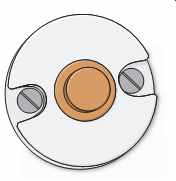AMAZON multi-meters discounts AMAZON oscilloscope discounts
OBJECTIVES
• understand the basics of the National Fire Alarm Code NFPA 72 (2010), the Standard for the Installation of Carbon Monoxide (CO) Detection and Warning Equipment NFPA 720 (2009), and the National Electrical Code NFPA 70 (2011).
• understand the basics of smoke, heat, and carbon monoxide alarms.
• understand the location requirements for the installation of smoke, heat, and carbon monoxide alarms for minimum acceptable levels of protection.
• understand the location requirements for the installation of smoke and heat alarms that exceed the minimum acceptable levels of protection.
• discuss general requirements for the installation of security systems.
• be aware of important UL Standards covering fire warning equipment.
NATIONAL FIRE ALARM CODE (NFPA 72 )
NFPA 72 is the National Fire Alarm Code.
The importance of installing smoke and fire alarms in homes is supported by results from exhaustive investigations of home fires indicating that measurable quantities of smoke come before detectable quantities of heat. In other words, smoke generally comes before fire. Because this is true, smoke alarms are considered the primary means of protection against fire in homes.
Following are some interesting facts about home fires.
Fires in homes were the third leading cause of deaths in homes-more deaths from asphyxiation than from burns.
Half of fires in homes occurred between 10 pm and 8 am. That's sleep time.
Section 29 of the National Fire Alarm Code specifically covers Single- and Multiple-Station Alarms and Household Fire Alarm Systems. It contains the minimum requirements for the proper selection, installation, operation, and maintenance of fire warning equipment that will provide reasonable fire safety. Section 29 also covers small residential board and care occupancies, which are defined as A building or portion thereof that is used for lodging and boarding of four or more residents, not related by blood or marriage to the owners or operators, for the purpose of providing personal care services.
In NFPA 72, Section 29.1.2, we find that the primary purpose of fire warning equipment is to provide a reliable means to notify the occupants of the presence of a threatening fire and the need to escape to a place of safety before such escape might be impeded by untenable conditions in the normal path egress. NFPA 72 is not intended to provide protection to property, 29.1.5.
This section deals with the types of smoke and heat alarms typically installed in one- and two-family dwellings. These smoke and heat alarms are not classified as fire alarm systems.
This section does not involve the more complex household fire alarm systems, but rather the devices and a fire alarm control unit(s) that receive, monitor, and process signals from detection devices.
These types of fire alarm systems communicate via telephone or wireless with a central station that in turn calls the fire department. Fire alarm systems are required to meet stricter rules regarding the sound level and time of audible signals. There are also tougher rules regarding sleeping area requirements.
Fire alarm systems require rechargeable batteries from the ac power source supplying the control unit(s). Typical home-type smoke and heat alarms are permitted to have replaceable batteries.
Section 29 of the National Fire Alarm Code tells us where to install smoke and heat detectors and alarms in homes.
Article 760 in the National Electrical Code (NEC) tells us how to install the wiring for fire alarm systems.
Section 29.3.2 of the National Fire Alarm Code states that fire warning equipment shall be installed according to the listing and manufacturer's instructions.
There is nothing in the NEC that deals with carbon monoxide. To learn about carbon monoxide detectors and alarms in homes, we refer to NFPA 720, the Standard for the Installation of Carbon Monoxide (CO) Detection and Warning Equipment.
Because carbon monoxide is said to be the number one killer, many communities have passed legislation adopting all or parts of NFPA 720. NFPA 720 requires carbon monoxide detectors and alarms for all dwellings. Homeowners and landlords had better pay close attention to this! How often have you heard on the news or read in the newspaper that the carbon monoxide detectors did not work! The batteries were either dead or had been removed.
Equally important is that there is nothing in the National Fire Alarm Code that will prevent injury or death if proper escape routes have not been planned, 29.4.2.
Fire warning devices commonly used in a residence are heat detectors, FIG. 1, and combination smoke alarms/detectors, FIG. 2.
The more elaborate systems connect to a central monitoring customer service center through a telephone line. These systems offer instant contact with police or fire departments, a panic button for emergency medical problems, low-temperature detection, flood (high-water) detection, perimeter protection, interior motion detection, and other features.
All detections are transmitted first to the company's customer service center, where personnel on duty monitor the system 24 hours a day, 7 days a week. They will verify that the signal is valid. After verification, they will contact the police department, the fire department, and individuals whose names appear on a previously agreed-on list that the home owner prepared and submitted to the company's customer service center.
NFPA Standards are not law until adopted by a city, state, or other governmental body. Some NFPA Standards are adopted totally, while only portions of others are adopted. Installers must be aware of all requirements in the locality in which they are doing work. Most communities require a special permit for the installation of fire warning equipment and security systems in homes, and require registration of the system with the police and/or fire departments.
In most instances, fire protection requirements are found in the building codes of a community and are not necessarily spelled out in the electrical code.
Are Smoke and Heat Alarms Required?
Pay particular attention to the words found in NFPA 72 29.1.2, which states, Smoke and heat alarms shall be installed in all occupancies where required by governing laws, codes, or standards.* Similar wording is found in 29.5.1.1. This puts the responsibility on the local building department.
It might seem confusing to have so many codes.
Without question, you must become familiar with your local applicable laws, codes, or standards.
Most communities adopt building codes published by the International Code Council (ICC). These codes contain requirements for the installation of smoke alarms. Your local building department officials can explain what is required for new work and remodel work (alterations, repairs, and additions) where a permit is required. Whereas new work requires interconnected, hard-wired, battery backup smoke alarms, it might be acceptable on remodel jobs to install battery-powered-only smoke alarms for existing areas where interior walls or ceiling finishes are not removed to expose structural framing members. To install, interconnect, and hard-wire smoke alarms in these existing areas could result in damage to walls and ceilings, requiring patching, repainting, or other repairs-an uncalled for and tremendous expense. If there is access from an attic, crawl space, or basement, the inspector might require interconnected, hard-wired, battery backup smoke alarms if you can do the job without having to remove interior finishes. Check this out with your local inspector!
===
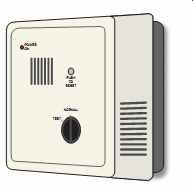
FIG. 2 Combination smoke alarm/detector.
===
DEFINITIONS
Here are some very important definitions from NFPA 72 and NFPA 720:
An alarm is A warning of danger.* A heat alarm is A single- or multiple station alarm responsive to heat.* A smoke alarm is A single- or multiple station alarm responsive to smoke.* A detector is A device suitable for connection to a circuit that has a sensor that responds to a physical stimulus such as heat or smoke.*
A heat detector is A fire detector that detects either abnormally high temperature or rate of temperature rise, or both.* A smoke detector is A device that detects visible or invisible particles of combustion.* A household fire alarm system is A system of devices that uses a fire alarm control unit to produce an alarm signal in the household for the purpose of notifying the occupants of the presence of a fire so that they will evacuate the premises.* Shall Indicates a mandatory requirement.
A combination detector is a device that either responds to more than one of the fire phenomenon or employs more than one operating principle to sense one of these phenomenon. Typical examples are a combination of a heat detector with a smoke detector or a combination rate-of-rise and fixed temperature heat detector. This device has listings for each sensing method employed.* A single station alarm is A detector comprising an assembly that incorporates a sensor, control components, and an alarm notification appliance in one unit operated from a power source either located in the unit or obtained at the point of installation.* A multiple station alarm is A single station alarm capable of being interconnected to one or more additional alarms so that the actuation of one causes the appropriate alarm signal to operate in all interconnected alarms.* A dwelling unit is A single unit, providing complete and independent living facilities for one or more persons, including permanent provisions for living, sleeping, cooking, and sanitation (NEC).* A living area is Any normally occupiable space in a residential occupancy, other than sleeping rooms or rooms that are intended for combination sleeping/ living, bathrooms, toilet compartments, kitchens, closets, halls, storage or utility spaces, and similar areas.* A separate sleeping area is The area of a dwelling unit where the bedrooms or sleeping rooms are located.* In this section, rather than going back and forth between the words "alarm" and "detector," we refer to fire warning devices as alarms, knowing full well that before an alarm can sound, the cause must be detected. Most home-type fire warning devices combine the detector and alarm in one device.
The location requirements for smoke and heat alarms are pretty much the same.
SMOKE, HEAT, AND CARBON MONOXIDE ALARMS
This section covers the basic requirements for protection in homes against the hazards of fire, heat, smoke, and carbon monoxide. Fire alarm systems for commercial installations are much more complicated than the typical household system.
Fire is the third leading cause of accidental death. Home fires account for the biggest share of these fatalities, most of which occur at night during sleeping hours. Rapidly developing high-heat fires and slow smoldering fires are the culprits. Both produce smoke and deadly gases.
Smoke, heat, and carbon monoxide alarms are installed in a residence to give the occupants early warning of the presence of fire or toxic fumes. Fires produce smoke and toxic gases that can overcome the occupants while they sleep. Most fatalities result from the inhalation of smoke and toxic gases, rather than from burns. Heavy smoke reduces visibility.
In nearly all home fires, detectable smoke precedes detectable levels of heat. People sleeping are less likely to smell smoke than people who are awake. The smell of smoke probably will not awaken a sleeping person. Therefore, smoke alarms are considered to be the primary devices for protecting lives.
Heat alarms DO NOT take the place of smoke alarms. Heat alarms are installed in addition to smoke detectors.
Another lifesaving device is the carbon monoxide (CO) alarm, which senses dangerous carbon monoxide emitted from a malfunctioning furnace or other source. NFPA 720 is the Standard for the Installation of Carbon Monoxide (CO) Detection and Warning Equipment.
Home-type smoke, heat, and carbon monoxide devices as a rule have both the detector and the alarm in one device. There also are alarms that combine more than one type of sensor into one unit, such as smoke/heat, smoke/carbon monoxide, or carbon monoxide/explosive gases.
In larger, more complex commercial installations, detectors and alarms are generally separate devices that, when triggered, send a signal to a central control panel, which in turn sounds the general alarm.
As with all electrical installations, always install fire warning equipment that has been listed by a nationally recognized testing laboratory (NRTL).
DETECTOR TYPES
AC/Battery: Required in new construction.
These conform to the NFPA 72 Section 29.6 requirement that alarms have two power supplies-regular household 120-volt ac for the primary source of power and 9-volt battery for the secondary source. The alarm "chirps" when the battery gets low. See FIG. 3.
Interconnected: Required in new construction.
Should any smoke, heat, or carbon monoxide alarm trigger, that alarm will sound and simultaneously send a signal to set off all other interconnected alarms. See Section 29.5.2. Check the manufacturer's instructions to determine how many units may be interconnected. Never connect more units than the number specified by the manufacturer. Never "mix" different manufacturer's devices. Testing laboratories do not perform tests using more than one manufacturer's devices in the test. The alarm "chirps" when the battery gets low. These units usually have a small 3-wire power connector-the wires connect to the field wiring and the other end has a connector that plugs into the back of the unit. See FIG. 4. The pigtail may have a red or orange-colored "interconnect" wire. The field wiring between alarms is 3-wire nonmetallic-sheathed cable that contains a red insulated conductor that is used as the "interconnect" wire.
Plug-in: Not permitted in new construction.
These alarms plug into a wall outlet that is not controlled by a wall switch. They operate on 120 volts as the primary source of power and on a 9-volt battery as the secondary source.
The alarm "chirps" when the battery gets low.
If of the plug-in type, they must have some sort of restraining means so as to reduce the possibility of being unplugged.
Battery-Operated Only: Not permitted in new construction. These alarms operate on a 9-volt battery only. The alarm "chirps" when the battery gets low. These alarms are commonly used in existing homes.
For the Hearing Impaired: These alarms have a bright strobe light that provides a visual alarm for the hearing impaired. This complies with the requirements found in the Americans with Disabilities Act (ADA).
===
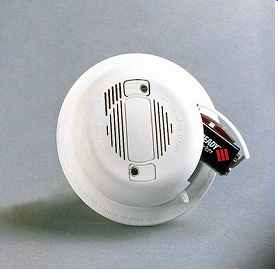
FIG. 3 An ac-dc smoke alarm that operates on 120 volts ac as the primary
source of power and a 9-volt battery as the secondary source of power. In the
event of a power outage, the alarm continues to operate on the battery.
===
WIRELESS SYSTEMS (LOW-POWER RADIO)
Wireless technology has come a long way in recent years. Here is an overview of what wireless means as related to smoke and fire alarms.
When one alarm sounds off, all other alarms in the house are required to sound off at the same time.
Stated another way, the alarms must be interconnected so as to "communicate" with one another.
In new installations, this is generally done with hard-wiring, as indicated in FIG. 4.
Hard-wiring smoke alarm systems-or adding more smoke alarms to an existing installation and trying to fish wires through walls and ceilings-can be messy, time-consuming, and costly.
Today, wireless systems that are listed in conformance to UL Standard 217, the standard for single- and multiple-station smoke alarms, are avail able. Both 120-volt ac- and battery-powered devices are used. Wireless systems might be the answer to installing a smoke alarm system economically and should be considered.
120-volt ac Powered: For existing 120-volt ac-powered systems, one interconnected smoke alarm is replaced with a 120-volt ac-powered smoke alarm that is designed specifically to send a wireless signal to other wireless smoke alarms of the same manufacturer. This triggers all of the other wireless smoke alarms to sound off. Additional smoke alarms can be installed anywhere in the house. That's all there's to it! Battery Powered: For existing homes that do not have a smoke alarm system, the world of wireless technology can be quite advantageous. Battery-powered wireless smoke alarms can be installed. When one smoke alarm senses smoke, it triggers and sends a signal (wireless) to all other wireless battery powered smoke alarms in the home. They are "interconnected" via wireless technology. No hard-wiring is required.
====
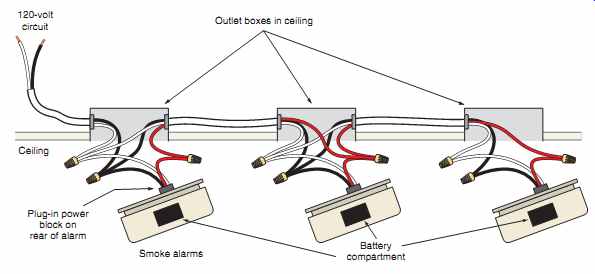
FIG. 4: Interconnected smoke or heat alarms. The 2-wire branch circuit is run
to the first alarm, then 3-wire nonmetallic-sheathed cable interconnects the
other alarms.
If one alarm in the series is triggered, all other alarms will sound off. See NFPA 72, 29.5.2.1.1.
====
The maximum number of smoke alarms that can be interconnected is specified in the instructions furnished by the manufacturer, based on the testing and listing of the devices.
IMPORTANT: Local codes may or may not accept wireless smoke alarm systems. Check this out with your local building officials.
IMPORTANT: Whether the system is hard wired or wireless, never mix different manufacturers' components.
IMPORTANT: Check the system regularly in accordance with manufacturer's instructions.
IMPORTANT: Be sure to install equipment "listed for the purpose," Section 29.3.1.
See NFPA 72, Section 6.17 for a complete list of requirements for wireless systems. Also see Section 29.7.7.
TYPES OF SMOKE ALARMS
Two common types of smoke alarms are the photo electric type (sometimes called photoelectronic) and the ionization type. They usually contain an indication light to show that the unit is functioning properly. They also may have a test button that simulates smoke, so that when the button is pushed, the detector's smoke-detecting ability as well as its circuitry and alarm are tested.
Some alarms are tested with a magnet. Others are tested with a listed spray from an aerosol can.
Smoke alarms generally do not sense heat, flame, or gas. However, some smoke alarms can be set off by acetylene and propane gas.
Some alarms have a "hush button" that can temporarily silence a nuisance alarm for about 15 minutes.
Photoelectric Type
The photoelectric type of smoke alarm has a light sensor that measures the amount of light in a chamber. When smoke is present, an alarm sounds, indicating a reduction in light due to the obstruction of the smoke. This type of sensor detects smoke from burning materials that produce large quantities of smoke, such as furniture, mattresses, and rags.
The photoelectric type of alarm is less effective for gasoline and alcohol fires, which do not produce heavy smoke. This type of alarm can become more sensitive to smoke as it gets older.
Photoelectric sensors are a good choice for areas subject to steam, such as in or outside bathrooms, utility rooms, and kitchens.
There are two types of photoelectric devices: light obscuration and light scattering.
Ionization Type The ionization type of alarm contains a low-level radioactive source (less than used in luminescent watch and clock dials), which supplies particles that ionize the air in the detector's smoke chamber. Plates in this chamber are oppositely charged. Because the air is ionized, an extremely small amount of current (millionths of an ampere) flows between the plates.
Smoke entering the chamber impedes the movement of the ions, reducing the current flow, which triggers the alarm. This type often sets off a nuisance alarm because cooking routinely gives off small "invisible" smoke particles. This type of alarm can become more sensitive to smoke as it get older.
The ionization type of alarm is effective for detecting small amounts of smoke, as in gasoline and alcohol fires, which are fast flaming with little or no smoke.
Some smoke alarms are available with both ionization and photoelectric sensors combined. Other smoke alarms are available with smoke and carbon monoxide detection capabilities or smoke and heat detection capabilities in one unit.
TYPES OF HEAT ALARMS
Heat alarms respond to heat-not smoke! Three types of heat alarms are described as follows.
• Fixed temperature heat detectors sense a specific fixed temperature, such as 1358F (578C) or 2008F (938C). They shall have a temperature rating of at least 258F (148C) above the normal temperature expected, but not to exceed 508F (288C) above the expected temperature. Fixed temperature detectors are sometimes combined with smoke alarms and carbon monoxide alarms.
• Rate-of-rise heat detectors sense rapid changes in temperature (128F to 158F per minute) such as those caused by flash fires.
• Fixed/rate-of-rise temperature detectors are available as a combination unit.
• Fixed/rate-of-rise/smoke combination detectors are available in one unit.
INSTALLATION REQUIREMENTS
The following information includes specific recommendations for installing smoke alarms and heat alarms in homes. Remember that smoke alarms are the primary fire warning devices, and heat detectors are installed in addition to the required smoke alarms. As you continue reading, study FIGs. 5, 6, 7, 8, and 9. Complete data are found in NFPA Standard No. 72, Section 29, and in the instructions furnished by the manufacturer of the equipment.
The Absolute Minimum Level of Protection
Here is a brief summary of the absolute mini mum level of protection for smoke alarms for new residential construction in conformance to NFPA 72, Section 29. Some communities have adopted portions of NFPA 72 for existing dwellings. You will have to check with your local authority having jurisdiction (AHJ). Because life safety is so important, attending an NFPA seminar on NFPA 72 is highly recommended.
• Install multiple station smoke alarms:
a. in all sleeping rooms and guest rooms.
b. outside each separate sleeping area, within 21 ft (6.4 m) of any door to the sleeping area. This distance is measured along the path of travel.
c. on every level of a dwelling unit. This includes basements but excludes crawl spaces and unfinished attics.
d. in guest bedrooms and suites: More elaborate homes may perhaps have a guest bedroom(s) or suite, completely self contained with bedroom(s), bathroom(s), and closet(s).
===
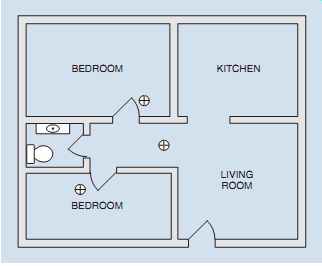
FIG. 5: Smoke alarms are required in all sleeping areas, outside all sleeping
areas, and on every level. Acceptable locations are on the ceiling or on the
wall space above the door. See FIGs. 7, 8, and 9 for location restrictions.
===
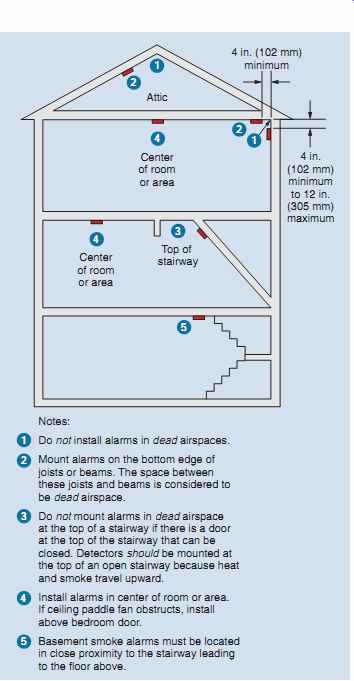
FIG. 6: Recommendations for the installation of heat and smoke alarms. Check
manufacturers' installation instructions for their recommendations about installing
smoke and heat alarms in attics.
Center of room or area
Top of stairway
Center of room or area
Attic 4 in. (10^2 mm) minimum to 12 in. (305 mm) maximum 4 in. (102 mm) minimum
Notes:
Do not install alarms in dead airspaces.
Mount alarms on the bottom edge of joists or beams. The space between these joists and beams is considered to be dead airspace.
Do not mount alarms in dead airspace at the top of a stairway if there is a door at the top of the stairway that can be closed. Detectors should be mounted at the top of an open stairway because heat and smoke travel upward.
Install alarms in center of room or area.
If ceiling paddle fan obstructs, install above bedroom door.
Basement smoke alarms must be located in close proximity to the stairway leading to the floor above.
===
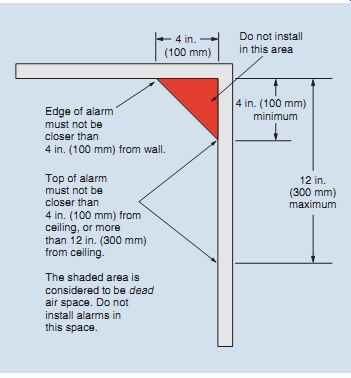
FIG. 7 Do not mount smoke or heat alarms in the dead airspace where the
ceiling meets the wall.
Edge of alarm must not be closer than 4 in. (100 mm) from wall.
Top of alarm must not be closer than 4 in. (100 mm) from ceiling, or more than 12 in. (300 mm) from ceiling.
The shaded area is considered to be dead air space. Do not install alarms in this space.
12 in. (300 mm) maximum 4 in. (100 mm) minimum 4 in. (100 mm) Do not install in this area
FIG. 8 Installing smoke and heat detectors/alarms in peaked (cathedral) ceilings.
36 in. (900 mm) 4 in. (100 mm) 36 in. (900 mm) Do not install in this area.
Install in this area.
===
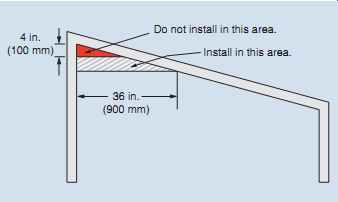
FIG. 9 Installing smoke and heat detectors/alarms in sloped ceilings.
4 in. (100 mm) Do not install in this area.
Install in this area.
36 in. (900 mm)
===
If these are separated from the rest of the house by a door, a smoke alarm shall be installed in the guest bedroom or suite, plus an additional smoke alarm shall be installed on the living area side of the door.
In instances where a hallway is outside the sleeping area, a smoke alarm shall be installed in that hallway. If that hallway is closed off by a door, an additional smoke alarm shall be installed on the living area side of the door. The bottom line is that three smoke alarms might be needed.
e. After installing smoke alarms required in (a), (b), (c), and (d), check one more thing for large homes. It might be necessary to install additional smoke alarms for a given floor area 1000 ft 2 (93 m^2 ) or greater. Don't include the garage area. To conform, either of the following is acceptable:
1. Check to verify that no point on the ceiling of the given floor area is more than 30 ft (9.1 m) from a smoke alarm.
2. Install a smoke alarm for every 500 ft^2 (46.5 m^2 ) in the given floor area.
f. for cathedral and/or vaulted ceilings extended over more than one floor. Meeting requirements (a), (b), (c), and (d) for the upper level will meet requirement (e).
g. For existing dwellings, listed battery powered smoke alarms that are not interconnected are generally permitted. This provides a reasonable level of protection as opposed to having no smoke alarms at all.
However, your local Code might require ac/dc dual-powered interconnected alarms.
• Smoke alarms must have at least two independent sources of power. The primary source is the 120-volt ac circuit, and the secondary (standby) source is the integral battery power supply.
• The ac source of power is permitted to be a dedicated branch circuit or an unswitched part of a conventional branch circuit.
Where to Install In bedrooms and halls outside of sleeping areas.
See FIG. 5.
In other rooms and areas. See FIG. 6.
On walls-not closer than 4 in. (100 mm) but not farther than 12 in. (300 mm) from the adjoining ceiling. Do not install in dead air space. See FIGs. 6 and 7.
On flat ceilings-not closer than 4 in. (100 mm) from the adjoining wall. See FIGs. 6 and 7. A level ceiling is one that is level or has a slope of not more than 1 ft in 8 ft (1 m in 8 m).
On peaked ceilings-locate with 36 in. (900 mm) horizontally from the peak, but not closer than 4 in. (100 mm) vertically from the peak. A peaked ceiling might also be called a cathedral ceiling. Do not install in dead air space. See FIG. 8.
On sloped ceilings-a sloped ceiling is defined as having a slope greater than 1 ft in 8 ft (1 m in 8 m). Locate within 36 in. (900 mm) of the high side but not closer than 4 in. (100 mm) from the adjoining wall. Do not install in dead airspace. See FIG. 9. A level ceiling is one that is level or has a slope of not more than 1 ft in 8 ft (1 m in 8 m).
How to Wire Smoke and Heat Alarms
In new construction, smoke and heat alarms require both primary (120-volt) and secondary (battery) sources of power. The National Fire Alarm Code NFPA 72 does not specify where to pick up the 120-volt supply.
Smoke and Fire Alarms and AFCI Protected Branch Circuits?
An often asked question is: "Are home-type smoke and fire alarms permitted to be connected to an AFCI protected branch circuit? As it now stands, the answer is yes. Read the following words carefully.
NEC 210.12(A) states that in dwelling units, All 120-volt, single-phase, 15- and 20-ampere branch circuits supplying outlets installed in dwelling unit family rooms, dining rooms, living rooms, parlors, libraries, dens, bedrooms, sunrooms, recreation rooms, closets, hallways, or similar rooms or areas shall be protected by a listed arc-fault circuit interrupter, combination type, installed to provide protection of the branch circuit.* The word all in this requirement leaves no doubt as to the intent. All means all! No exceptions! This includes the branch circuit that supplies smoke alarms.
The justification for the "yes" answer is that NFPA 72, Section 29, requires smoke and fire alarms to be dual-powered-the ac power supply and the battery backup. The battery is required to last for 24 hours in normal conditions, followed by 4 minutes of alarm. In that amount of time, the homeowner, sleeping or awake, will become aware of a potential problem by the beeping or chirping.
Some units have visual indication also.
Probably the simplest way to hard-wire and interconnect smoke alarms when wiring new homes is to pick up one smoke alarm from one of the bedroom branch circuits, then run the interconnecting wiring to all of the other required and optional smoke alarms. The electrical plans for this residence indicate the location of the required and optional smoke and heat alarms.
Although smoke alarms are required to have battery backup power, some local codes do not permit smoke alarms to be supplied by the same branch circuit as the bedroom lighting. They require that some other branch circuit supply the smoke alarms.
Check this out with your electrical inspector.
Wireless systems are discussed earlier in this section.
